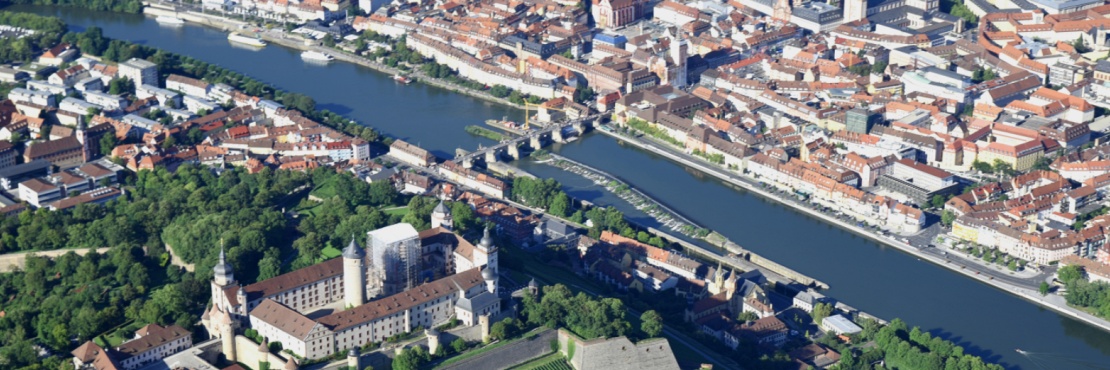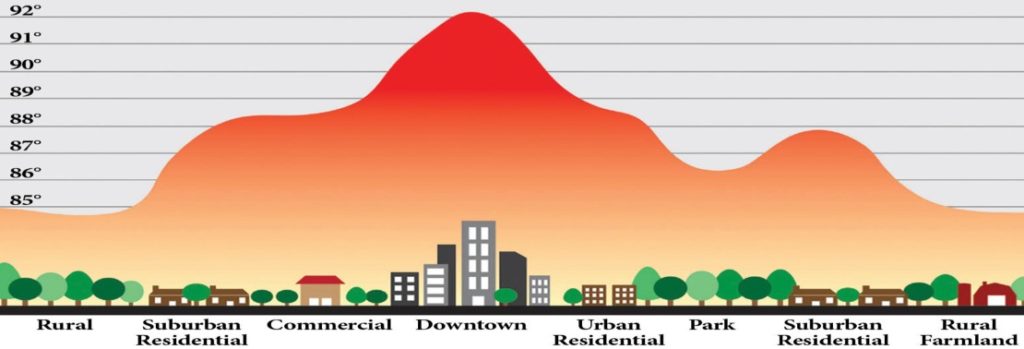Dr. Katharina Baumeister of Technical University of Munich writes:
Scientists from the Technical University of Munich (TUM) investigated the effects of trees on the temperature in the city as part of an empirical study lasting several years. Using the example of the city of Würzburg, the researchers show that around 40 percent green space is required to ensure cooler temperatures in summer.
Green infrastructure can help cities adapt to climate change. It can reduce the increased air temperatures in cities and thus the heat stress for people. But it depends on the type of greening.
In order to understand the extent of the urban heat island and the connection between daily and seasonal outdoor heat stress, a research team led by the TUM conducted an empirical study in Würzburg for three years.
A comparison of urban and suburban climates
“Our study showed that about 40 percent of green space in the built environment, including lawns, green roofs, and green walls, could cut extreme summer heat stress in half without increasing winter cold stress”
Dr. Mohammad A. Rahman,
Researcher at the Department of Strategy and Management of Landscape Development
The mean air temperature in inner-city locations was 1.3 degrees Celsius higher in summer and 5 degrees Celsius higher in winter than in suburban locations. “The differences were influenced by the characteristics of the prevailing land use, in particular the number of buildings,” says Stephan Pauleit , Professor of Strategy and Management of Landscape Development at TUM.
A total of 97 hot days with an air temperature of more than 30 degrees Celsius were counted at one of the inner-city locations – at a market square where there is not a single tree. Of these, nine days were recorded when the wet-bulb temperature – an index used to understand thermal stress – was above the extreme heat stress threshold of 35 degrees Celsius. The wet-bulb temperature is the lowest temperature that can be reached by evaporative cooling. The index was calculated from the meteorological and other related variables of the station, which was built right in the center of the marketplace. These values indicate the influence of the environment, including site features such as buildings or green spaces.
In contrast, there were no extreme heat stress days at any of the suburban locations. “Our study showed that about 40 percent of green space in the built environment, including lawns, green roofs, and green walls, could cut extreme summer heat stress in half without increasing winter cold stress,” says Dr. Mohammad A. Rahman, Researcher at the Department of Strategy and Management of Landscape Development.

Figure 1. Study area—the city of Würzburg across the urban-sub-urban transect (a) and Land use land cover classification within the 500 m buffer of each measuring station (b). The land cover map of the study area was obtained using an object-based image classification approach applying standard nearest neighbour classifier on a Sentinel-2A image, later verified with Google Earth images. The map was generated using QGIS 3.10.0-A Coruña (https://qgis.org/en/site/).
Various green spaces are important for the urban climate
In heterogeneous urban ecosystems, trees have multiple biophysical functions. Firstly, with their extensive treetops, trees reduce the entry of short-wave radiation onto the ground by up to 90 percent. This is especially the case in summer when the deciduous trees in temperate and cold climates bear their leaves. Second, trees cool their immediate surroundings by 1 to 8 degrees Celsius, increasing relative humidity. It does this through their transpiration, which is the amount of water lost through the leaves as they produce food.
At the same time, trees can also have some negative effects, such as obstructing the vertical and horizontal mixing of air in narrow street canyons so that polluted air at pedestrian height is not diluted and vented. Grass growth, on the other hand, reduces thermal radiation due to higher reflection compared to the built environment. However, it allows higher wind speeds to reduce the summer heat load and higher solar radiation, which at the same time minimizes the winter cold load.
Strategic green space planning essential
“Our results question the structural densification of inner cities that can be observed today in growing cities. Adaptation to climate change can only succeed if sufficient greening of the city is ensured,” says Rahman.
In order to avoid negative effects of climate change on human health, green spaces must be planned strategically. In this way, they can also effectively reduce thermal stress in densely built-up urban quarters.
Read more: City greening: Not only trees are important
 Greenroofs.comConnecting the Planet + Living Architecture
Greenroofs.comConnecting the Planet + Living Architecture









